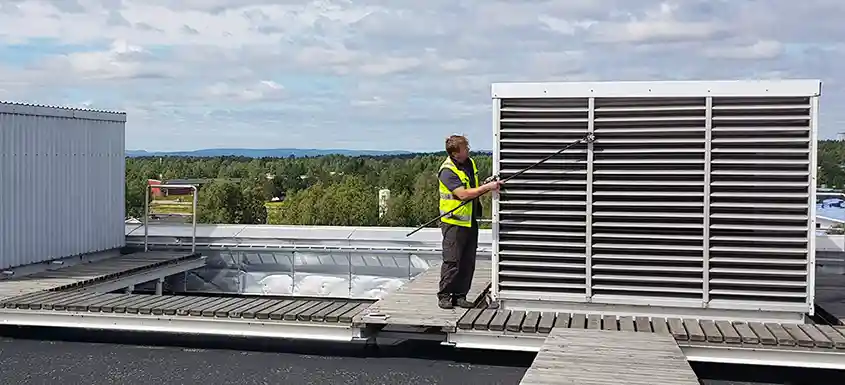Metsä Group Half-year financial report January – September 2025
January–September 2025 (1–9/2024)
- Sales were EUR 4,508 million (4,273).
- Operating result was EUR -63 million (157). Comparable operating result was EUR -27 million (170).
- Result before taxes was EUR -108 million (119). Comparable result before taxes was EUR -73 million (131).
- Comparable return on capital employed was -0.3% (3.2).
- Net cash flow from operations was EUR 216 million (-165).
July–September 2025 (7–9/2024)
- Sales were EUR 1,440 million (1,336).
- Operating result was EUR -69 million (111). Comparable operating result was EUR -72 million (113).
- Result before taxes was EUR -84 million (100). Comparable result before taxes was EUR -87 million (102).
- Comparable return on capital employed was -3.5% (6.1).
- Net cash flow from operations was EUR 207 million (87).
Events during the third quarter of 2025
Demand for market pulp was weak in both Europe and China. Metsä Group has curtailed its production at the Joutseno pulp mill for the time being.
The average sales prices of Metsä Group’s softwood market pulp decreased by 5% in Europe and by 7% in China compared to the previous quarter.
Metsä Group’s paperboard delivery volume decreased slightly from the previous quarter. The average paperboard price remained stable. Production was curtailed due to the market situation and to release working capital. Production volumes and profitability were also affected by mill maintenance shutdowns and the Simpele investment shutdown.
The operating result for July–September was affected by EUR 30 million in insurance compensation for the gas explosion at the Kemi bioproduct mill and an impairment of EUR -22 million for assets damaged in the explosion.
Due to prolonged weak profitability and the uncertain market outlook, Metsä Group initiated the planning of a significant cost savings and profit improvement programme. The programme aims for annual cost savings of EUR 300 million.
Jussi Vanhanen assumed his post as President and CEO of Metsä Group on 1 July 2025.
Events after the review period
Most of the measures of the cost savings and profit improvement focus on procurement and end product logistics and the wood supply chain’s efficiency from the forest to the mill. In addition, the need to restructure and simplify operations in order to reduce fixed costs has been identified.
On 2 October, Metsä Group announced it would initiate statutory negotiations concerning all its business areas and Group operations. The negotiations are part of the cost savings and profit improvement programme. If implemented, the planned measures may lead to a permanent reduction of 800 permanent jobs, 540 of which are expected to be in Finland.
The negotiations do not include permanent closures of production units. The development of Metsä Group’s new business projects (Muoto, Kuura, lignin and bio-based carbon capture) will continue according to each project’s individual plan and schedule.
Cost provisions related to the cost savings and profit improvement programme will be recognised as items affecting comparability in the last quarter result.
On 20 October 2025, Metsä Board signed a EUR 250 million revolving credit facility related to sustainability targets, which will be used to renew the EUR 200 million revolving credit facility expiring in January 2027 that has not been drawn down.
President and CEO Jussi Vanhanen:
The highlight of Metsä Group’s financial performance in the third quarter was cash flow from operations, which was more than EUR 200 million positive. In particular, the measures taken in the paperboard business to reduce working capital succeeded as planned.
As expected, the third quarter operating result was clearly negative. The main reasons for this were the low pulp price, particularly in China, and the lower paperboard business volumes in the US market. Both can be traced to the protectionism that took hold in world trade in the spring. The tariffs the US imposed on China halted pulp orders from China, leading to a slump in the price of pulp. During the third quarter, Metsä Group’s pulp deliveries picked up from the dip in the previous quarter but remained below the level seen in the first quarter. In China, the price level has not recovered, as can be seen in the weak result of the pulp business.
The US tariffs made a considerable dent in the result of the paperboard business, or Metsä Board. The order inflow from the US has shown only a minor recovery since the slump in the spring. Due to the local market situation, we were unable to increase customer prices to offset the impact of tariffs. These factors, in addition to the low pulp price, especially affected the profitability of Metsä Board’s Husum mill. The annual maintenance shutdowns of the Simpele and Husum mills also contributed to the weak profitability of the paperboard business.
In the tissue paper business, the third quarter result improved from both the previous quarter and the corresponding period in the previous year, supported by higher delivery volumes and lower costs. In other good news, our new tissue paper mill in Mariestad in Sweden initiated customer deliveries as planned during the third quarter.
The profitability of the Wood Products Industry decreased mainly due to two factors. The problems of the ongoing ERP system renewal weakened the delivery capacity of the UK upgrading business in particular, causing customer losses and compensation. As expected, the operational efficiency of the Suolahti mill in Finland has also suffered from the gradual winding down of the mill. Metsä Group has previously announced that the mill will be closed by the end of 2026. The construction project of the new LVL mill in Äänekoski in Finland has progressed as planned.
The decline in the price of wood that began in the second quarter continued in the third quarter and was reflected in smaller wood trade volumes. The lower wood price will have a minor impact on Metsä Group’s result in the last quarter and a more visible impact in 2026. In the Nordic countries, the price of wood is nevertheless at a historically high level. Metsä Group’s wood resources are at a good level. Forest services sales have seen strong growth this year.
Metsä Group needs to significantly improve its result. In July, we therefore announced we would launch the planning of a EUR 300 million cost savings programme. This planning is now complete. Most of the cost savings will be achieved by optimising variable costs. The savings are expected to be gradually reflected in the result from the beginning of 2026 and to reach their full impact during 2027. As part of the cost savings programme, we announced in early October the launch of statutory negotiations on the permanent reduction of a total of 800 permanent jobs across Metsä Group’s units. This is very distressing for our committed workplace community, but it is unfortunately a necessary part of our efforts to significantly turn around our performance.

























































